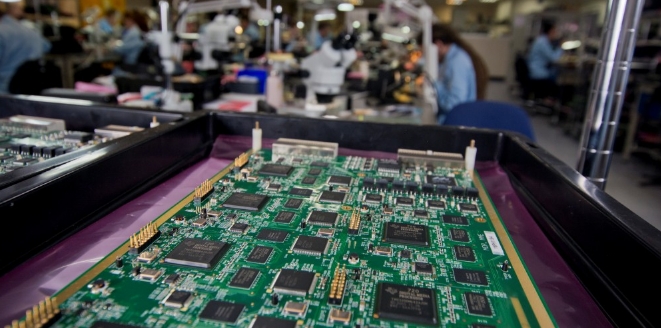In today's rapidly advancing technological landscape, electronic devices have become an integral part of our daily lives. From smartphones to automotive systems, the backbone of these gadgets lies within circuit boards. Electronic assembly manufacturing, through processes such as printed circuit board (PCB) assembly, is the key to producing efficient, reliable, and cutting-edge electronic devices. This article sheds light on the importance of electronic assembly manufacturing and explores the intricacies of PCB assembly.

Electronic assembly manufacturing encompasses a wide range of processes involved in the production of electronic devices. It involves the assembly of individual electronic components onto a circuit board, creating a functional and integrated device. The success of any electronic assembly lies in precision, efficiency, and the continuous pursuit of improved methodologies.
At the heart of electronic assembly manufacturing lies the fundamental building block: the circuit board. Also known as a PCB, a circuit board serves as the foundation for electronic components. It facilitates the electrical connections between them, enabling the flow of signals and power.
Fiberglass makes up the board, and it is non-conductive. A layer of copper or aluminum attaches components.
PCB assembly involves both manual and automated steps. Technicians use these steps to accurately place and solder electronic components onto a circuit board. You can divide this process into several key stages:
First, design the circuit board layout by considering size, component placement, signal flow, and power needs. Once the team finalizes the design, they create a prototype for testing and validation.
Sourcing high-quality components at competitive prices is crucial for the success of electronic assembly manufacturing. Manufacturers must establish strong relationships with trusted suppliers to obtain genuine components.
The advent of surface mount technology has revolutionized electronic assembly manufacturing. SMT enables placing smaller and denser components directly on the circuit board. This makes the circuit board more efficient and smaller in size. Automated machines accurately place and solder components onto the board's surface, ensuring precision and reliability.
Certain components, such as connectors or larger devices, require through-hole assembly. This process involves creating holes in the circuit board.
After that, workers insert the parts by hand. Finally, they soldered on the other side. Through-hole assembly still maintains its significance, especially in applications that demand robustness and durability.
Quality control is paramount in electronic assembly manufacturing. Automated optical inspection systems scan the circuit board for defects, ensuring that components are correctly placed and soldered. We conduct further functional and performance tests to verify the device's functionality before proceeding to packaging.
After inspecting and testing, we carefully package the electronic device for shipping.
As technological demands increase, electronic assembly manufacturing must keep up with the pace. Advanced assembly techniques improve efficiency, reducing production time and cost while maintaining high-quality standards.
With the constant push for smaller and more portable electronic devices, electronic assembly manufacturing plays a vital role in achieving miniaturization. Surface mount technology allows for higher component density and reduced device size while maintaining functionality.
Precise and reliable assembly methods are crucial in ensuring the longevity and durability of electronic devices. Modern methods like automated inspection and testing decrease the likelihood of selling defective products to customers.
Electronic assembly manufacturing, when executed with optimal efficiency, can lower production costs. Streamlined processes, accurate component procurement, and reduced rework contribute significantly to cost savings.
With electronic assembly manufacturing, it is possible to produce devices tailored to specific requirements. Flexibility in component selection, layout, and assembly allows for customization, catering to diverse industry needs. Furthermore, scalable production capabilities enable manufacturers to adapt to market demands promptly.
Electronic assembly manufacturing, especially PCB assembly, serves as the backbone of today's electronic devices. Through an intricate combination of design, procurement, assembly, and testing processes, manufacturers facilitate the creation of efficient, reliable, and cutting-edge electronic devices. As technology advances, using advanced assembly techniques is important for efficiency, making things smaller, reliability, saving money, and offering personalized solutions. The world of electronic assembly manufacturing is constantly evolving, fueling progress and innovation in countless industries.